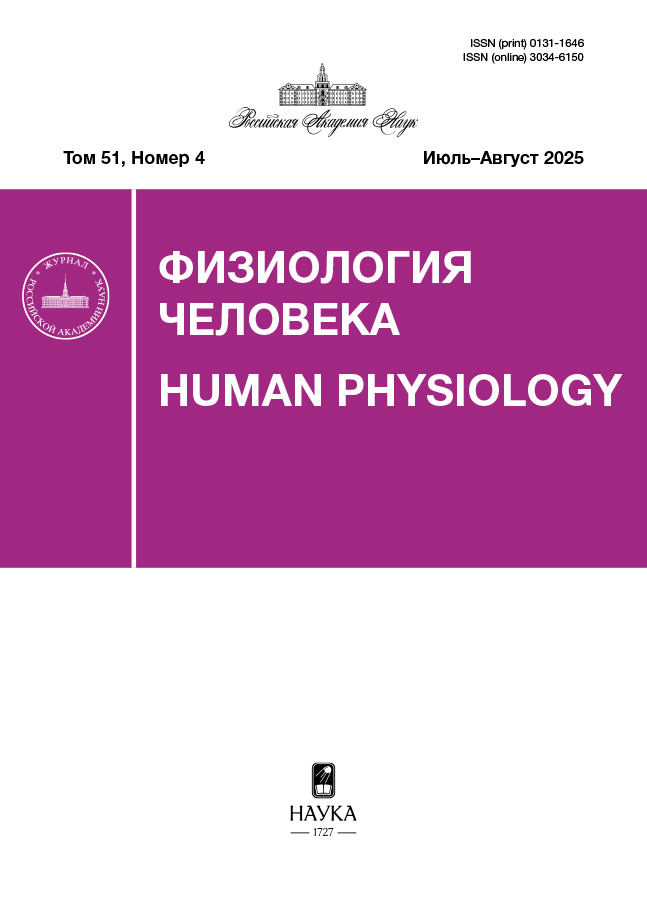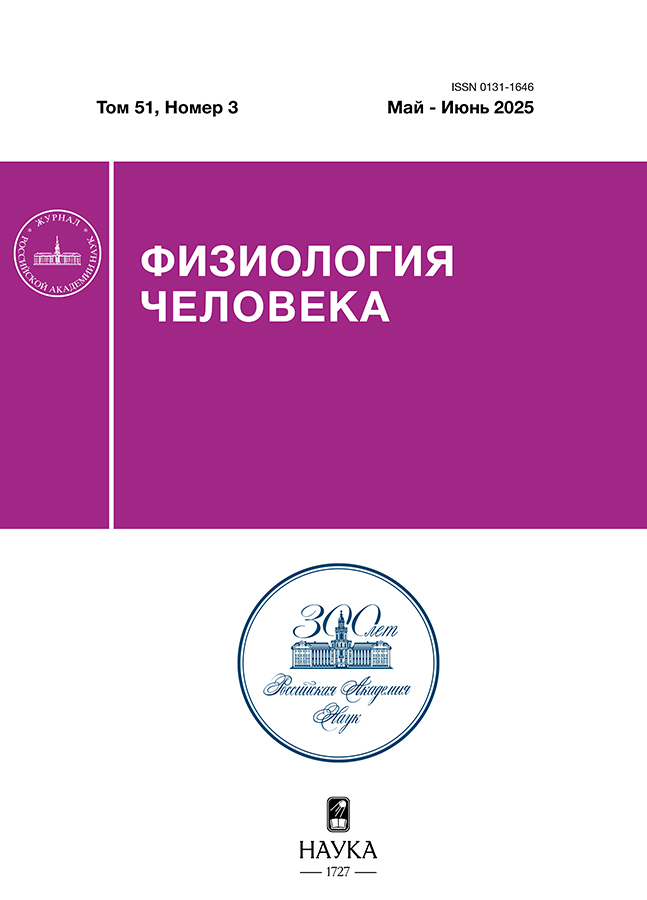Модуляция процессов адаптации человека к условиям невесомости искусственным воспроизведением эффектов действия весовой нагрузки в космическом полете
- Авторы: Фомина Е.В.1, Сенаторова Н.А.1, Романов П.В.1, Бабич Д.Р.1
-
Учреждения:
- ФГБУН ГНЦ РФ – Институт медико-биологических проблем РАН
- Выпуск: Том 51, № 3 (2025)
- Страницы: 125-136
- Раздел: ОБЗОРЫ
- URL: https://www.journal-ta.ru/0131-1646/article/view/684034
- DOI: https://doi.org/10.31857/S0131164625030124
- EDN: https://elibrary.ru/THDLGE
- ID: 684034
Цитировать
Полный текст
Аннотация
В настоящее время продолжают интенсивно изучаться механизмы адаптации человека к действию фактора невесомости, с которым человек как биологический вид встретился совсем недавно. Понимание механизмов адаптации человека к условиям невесомости позволяет предложить способы модуляции этого процесса с сохранением полезных приспособительных реакций на фоне приглушения негативных синдромов, характерных для космического полета (КП) и торможения механизмов, препятствующих благоприятному функционированию физиологических систем после возвращения в условия действия силы тяжести. Одним из неотъемлемых составляющих системы профилактики негативного влияния невесомости является искусственное воспроизведение эффектов действия силы тяжести, т.е. имитация воздействия на организм человека характерной для условий Земли весовой нагрузки. В статье рассматривается роль искусственного воспроизведения эффектов действия весовой нагрузки, соответствующей по величине массе тела человека до КП. В статье проверяется гипотеза о возможности модуляции процессов адаптации к условиям невесомости с помощью обеспечения необходимого сенсорного притока к рецепторам гравизависимых физиологических систем и ее влияние на протекание процессов реадаптации к условиям Земли. Проведен анализ используемого в ходе полета «весового» нагружения, а также анализ данных дополетных, полетных и послеполетных тестов на работоспособность 10 космонавтов, выполнивших полугодовые КП со средней продолжительностью 173 ± 33 суток. Показано, что регулярное воспроизведение эффектов весовой нагрузки, соответствующей массе тела человека на Земле, позволяет модулировать процесс адаптации человека к невесомости.
Полный текст
Об авторах
Е. В. Фомина
ФГБУН ГНЦ РФ – Институт медико-биологических проблем РАН
Автор, ответственный за переписку.
Email: fomin-fomin@yandex.ru
Россия, Москва
Н. А. Сенаторова
ФГБУН ГНЦ РФ – Институт медико-биологических проблем РАН
Email: fomin-fomin@yandex.ru
Россия, Москва
П. В. Романов
ФГБУН ГНЦ РФ – Институт медико-биологических проблем РАН
Email: fomin-fomin@yandex.ru
Россия, Москва
Д. Р. Бабич
ФГБУН ГНЦ РФ – Институт медико-биологических проблем РАН
Email: fomin-fomin@yandex.ru
Россия, Москва
Список литературы
- Gunga H.C. Human physiology in extreme environments. Academic Press. London, 2020. 349 p.
- Айдаралиев А.А., Максимов А.Л. Адаптация человека к экстремальным условиям: Опыт прогнозирования. Санкт-Петербург: «Наука», 1988. 126 c.
- Оппедизано М., Луиджиевич Д., Артюх Л.Ю. Адаптация человека к экстремальным условиям деятельности. Физиологические механизмы (структурный след адаптации) // Forcipe. 2021. T. 4. № 4. C. 18.
- Медведев Д.В., Суслина И. Физиологические факторы, обусловливающие физическую работоспособность человека на разных этапах адаптации к мышечной деятельности // Фундаментальные исследования. 2012. № 9–4. C. 820.
- Norsk P. Adaptation of the cardiovascular system to weightlessness: surprises, paradoxes and implications for deep space missions // Acta Physiol. 2020. V. 228. № 3. P. e13434.
- Trudel G., Shahin N., Ramsay T. et al. Hemolysis contributes to anemia during long-duration space flight // Nat. Med. 2022. V. 28. № 1. P. 59.
- Scott J.M., Stoudemire J., Dolan L., Downs M. Leveraging spaceflight to advance cardiovascular research on earth // Circulat. Res. 2022. V. 130. № 6. P. 942.
- Grigor’ev A., Orlov O., Baranov V. Space medicine: Scientific foundations, achievements, and challenges // Her. Russ. Acad. Sci. 2021. V. 91. № 6. P. 626.
- Stavnichuk M., Mikolajewicz N., Corlett T. et al. A systematic review and meta-analysis of bone loss in space travelers // NPJ Microgravity. 2020. V. 6. № 1. P. 13.
- Твердохлиб В.П., Твердохлиб Д.В., Митинский Г.М. и др. Общие механизмы адаптации и профилактика определяют здоровье здорового человека // Человек. Спорт. Медицина. 2006. № 3–1. С. 99.
- Наумов И.А., Корнилова Л.Н., Глухих Д.О. и др. Влияние афферентации различных сенсорных входов на отолито-окулярный рефлекс в условиях реальной и моделируемой невесомости // Физиология человека. 2021. T. 47. № 1. C. 84.
- Reschke M.F., Wood S.J., Clément G. Ocular counter rolling in astronauts after short-and long-duration spaceflight // Sci. Rep. 2018. V. 8. № 1. P. 7747.
- Glukhikh D.O., Naumov I.A., Schoenmaekers C. et al. The role of different afferent systems in the modulation of the otolith-ocular reflex after long-term space flights // Front. Physiol. 2022. V. 13. P. 743855.
- Носков В.Б. Адаптация водно-электролитного метаболизма к условиям космического полета и при его имитации // Физиология человека. 2013. Т. 9. № 5. C. 119.
- Olde Engberink R.H., van Oosten P.J., Weber T. et al. The kidney, volume homeostasis and osmoregulation in space: Current perspective and knowledge gaps // NPJ Microgravity. 2023. V. 9. № 1. P. 29.
- Фомина Е.В., Сенаторова Н.А., Бахтерева В.Д. и др. Роль быстрого бега в предотвращении негативных влияний пребывания человека в невесомости // Медицина экстремальных ситуаций. 2023. T. 25. № 4. C. 98.
- Фомина Е.В., Лысова Н.Ю., Резванова С.К. и др. Предикторы готовности космонавта к деятельности на поверхности Марса из опыта орбитальных полетов на МКС // Авиакосм. и экол. мед. 2019. T. 53. № 7. C. 19.
- Neves L.N.S., Gasparini V.H., Alves S.P. et al. Cardiorespiratory fitness level influences the ventilatory threshold identification // J. Phys. Educ. 2021. V. 32. P. e3279.
- Beaver W.L., Wasserman K., Whipp B.J. A new method for detecting anaerobic threshold by gas exchange // J. Appl. Physiol. 1986. V. 60. № 6. P. 2020.
- Summers R.L., Martin D.S., Meck J.V., Coleman T.G. Mechanism of spaceflight-induced changes in left ventricular mass // Am. J. Cardiol. 2005. V. 95. № 9. P. 1128.
- Hughson R.L., Robertson A.D., Arbeille P. et al. Increased postflight carotid artery stiffness and inflight insulin resistance resulting from six-months spaceflight in male and female astronauts // Am. J. Physiol. Heart Circ. Physiol. 2016. V. 310. № 5. P. H628.
- Ghani F., Cheung I., Phillips A. et al. Lung volume, capacity and shape in microgravity: A systematic review and meta-analysis // Acta Astronaut. 2023. V. 212. P. 424.
- Prisk G.K. Pulmonary challenges of prolonged journeys to space: Taking your lungs to the moon // Med. J. Aust. 2019. V. 211. № 6. P. 271.
- Баранов В.М., Катунцев В.П., Тарасенков Г.Г. и др. Изучение активности центрального дыхательного механизма в условиях длительного космического полета // Авиакосм. и экол. мед. 2022. Т. 56. № 3. С. 5.
- Kunz H., Quiriarte H., Simpson R.J. et al. Alterations in hematologic indices during long-duration spaceflight // BMC Hematol. 2017. V. 17. P. 12.
- Серова А.В., Журавлева О.А., Рыкова М.П. и др. Морфофункциональное состояние эритроцитов у космонавтов после полетов различной продолжительности на Международной космической станции // Авиакосм. и экол. мед. 2024. T. 58. № 4. C. 25.
- Scott J.M., Feiveson A.H., English K.L. et al. Effects of exercise countermeasures on multisystem function in long duration spaceflight astronauts // NPJ Microgravity. 2023. V. 9. № 1. P. 11.
- Moore A.D., Lynn P.A., Feiveson A.H. The first 10 years of aerobic exercise responses to long-duration ISS flights // Aerosp. Med. Hum. Perform. 2015. V. 86. № 12. P. A78.
- Moore Jr. A.D., Downs M.E., Lee S.M. et al. Peak exercise oxygen uptake during and following long-duration spaceflight // J. Appl. Physiol. 2014. V. 117. № 3. P. 231.
- Hackney K.J., Scott J.M., Hanson A.M. et al. The astronaut-athlete: Optimizing human performance in space // J. Strength Cond. Res. 2015. V. 29. № 12. P. 3531.
- English K.L., Downs M., Goetchius E. et al. High intensity training during spaceflight: Results from the NASA Sprint Study // NPJ Microgravity. 2020. V. 6. № 1. P. 21.
- Greene K.A., Withers S.S., Lenchik L. et al. Trunk skeletal muscle changes on CT with long-duration spaceflight // Ann. Biomed. Eng. 2021. V. 49. P. 1257.
- Blottner D., Moriggi M., Trautmann G. et al. Space omics and tissue response in astronaut skeletal muscle after short and long duration missions // Int. J. Mol. Sci. 2023. V. 24. № 4. P. 4095.
- Burkhart K., Allaire B., Bouxsein M.L. Negative effects of long-duration spaceflight on paraspinal muscle morphology // Spine. 2019. V. 44. № 12. P. 879.
- McNamara K.P., Greene K.A., Moore A.M. et al. Lumbopelvic muscle changes following long-duration spaceflight // Front. Physiol. 2019. V. 10. P. 627.
- Islamov R., Mishagina E., Tyapkina O. et al. Mechanisms of spinal motoneurons survival in rats under simulated hypogravity on earth // Acta Astronaut. 2011. V. 68. № 9–10. P. 1469.
- Porseva V., Shilkin V., Strelkov A. et al. Changes in the neurochemical composition of motor neurons of the spinal cord in mice under conditions of space flight // Bull. Exp. Biol. Med. 2017. V. 162. P. 336.
- Chelyshev Y.A., Muhamedshina Y., Povysheva T. et al. Characterization of spinal cord glial cells in a model of hindlimb unloading in mice // Neuroscience. 2014. V. 280. P. 328.
- Tyapkina O., Volkov E., Nurullin L. et al. Resting membrane potential and Na+, K+-ATPase of rat fast and slow muscles during modeling of hypogravity // Physiol. Res. 2009. V. 58. № 4. P. 599.
Дополнительные файлы

















